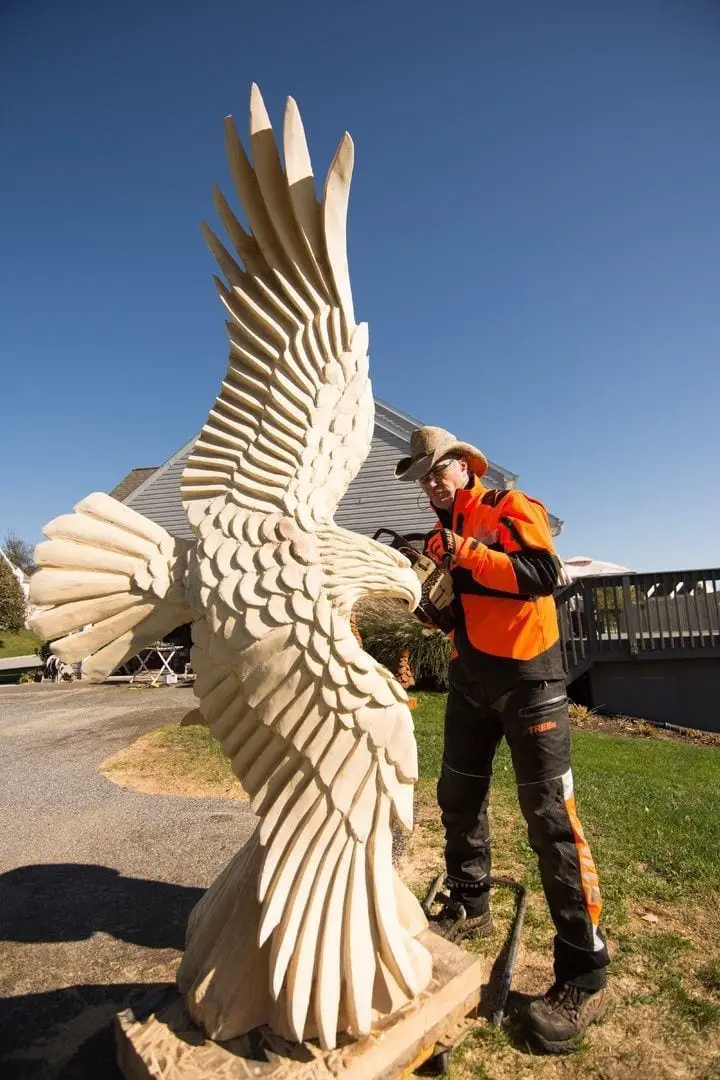
Image Courtesy of pexels.com
For a start, it’s crucial to understand the major factors that led to the development of American furniture within several different periods. Nonetheless, while we will compile and reveal the 12 periods of American furniture in our carefully curated compilation, there are actually many other sub-periods marking the various styles that have been incorporated into the art of furniture making in the United States.
Then again, if we want to understand the influences that shaped the American furniture industry, we need to take 2 particular key factors into consideration.
For this purpose, we have to look all the way back to the times when the colonists first landed in America. During these early years, the colonists had a single top concern, and it had little to do with any of the comforts of living in modern-day America. In short, the biggest concern of the colonists was none other but survival.
However, little by little the glory of America was starting to grow and expand, just like the economy of the country.
On another note, the 12 periods of American furniture have something in common, and that’s the heavy influence by both French and British furniture design.
What’s more, all of the major periods that mark the development of American furniture are also greatly impacted by the availability of local materials.
Are you already curious to peek behind the curtains of the 12 periods that have shaped the American furniture industry? Let’s jump in!
1) The Early American Period
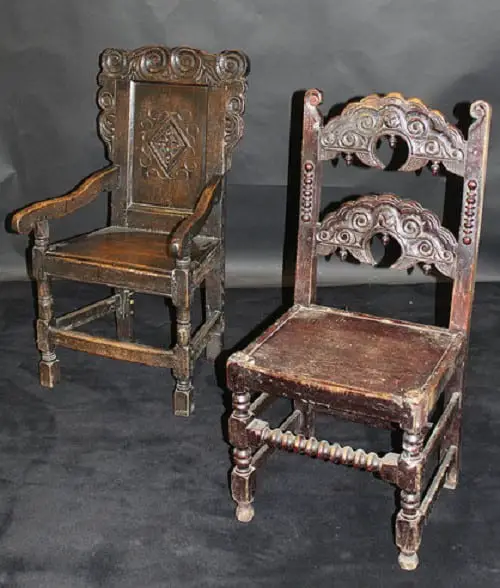
The Early American Period began in the 1640s and lasted through the beginning of the 1700s.
It was during this period when the American furniture design first started to extend beyond the merely practical value of the objects.
As a result, finials and raised panels became a part of the Early American Period furniture style. Nevertheless, ornamental carvings, as well as woodturning also became prominent.
Some of the most widely-used types of wood during the Early American Period include but are not limited to cherry, pine, apple, oak, and birch.
When it comes to the joinery techniques applied by the carpenters back then, the most common ones were the mortise and tenon joints varieties.
Video by WoodworkersJournal – Rhode Island Furniture, 1650-1830 – Yale University Art Gallery
Source: youtube.com
2) The Colonial Period
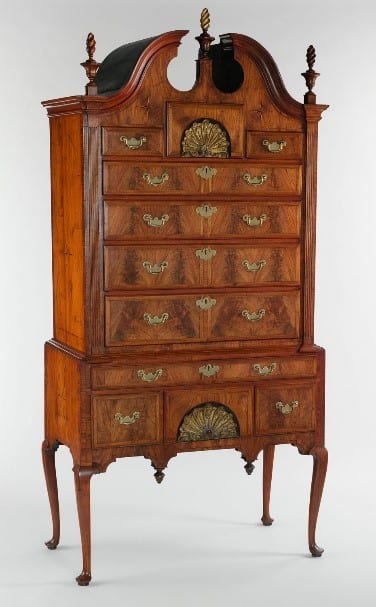
Image Courtesy of Metropolitan Museum of Art
The Colonial Period of American furniture dates back to the 1700s. This particular period lasted for approximately 80 years.
The heaviest influence that shaped the Colonial period came from the British furniture design. Certainly, the British furniture style was hard to confuse with any other style, mostly because of the rich ornaments.
However, even though the American furniture was greatly affected by the British designs, the overall style remained much more conservative. To illustrate this better, the ornaments in US furniture design were significantly less as compared with those of the British.
Interestingly, it is during the Colonial period that the dovetail joints started growing in popularity.
The focus of wood used for furniture manufacturing also shifted. As a result, the most widely-used types of wood became elm, walnut, and mahogany.
Last but not least, different finishes were applied, typically over the stain. These include wax, paint, and oil varnish.
3) The Pennsylvania Dutch Period
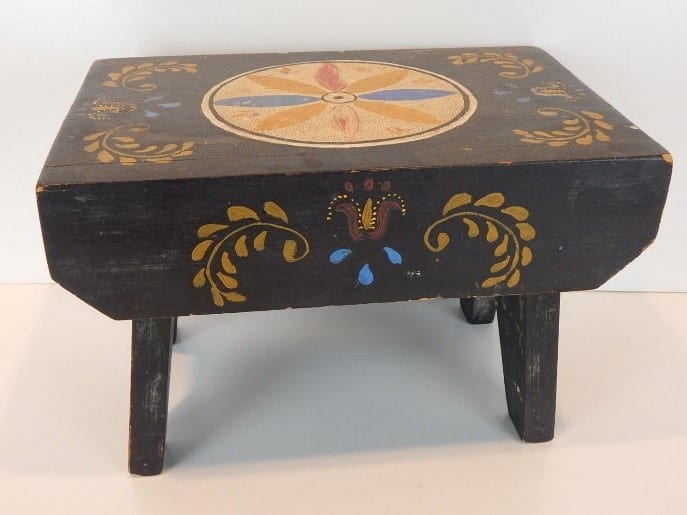
The Pennsylvania Dutch Period lasted for over 100 years, specifically throughout the 1720s to the 1830s.
Interestingly, one can easily get confused by the name of this particular period of American furniture.
While we are mostly used to associate the very mention of Dutch with the Netherlands and/or its inhabitants, the Pennsylvania Dutch period is actually influenced by the German.
And indeed, according to Merriam Webster’s dictionary, the definition of Dutch goes as it follows “archaic: of or relating to the Germanic peoples of Germany, Austria, Switzerland, and the Low Countries.”
The most widely used types of wood include a mixture of the wood materials used in the Early American and the Colonial period, namely oak, pine, and walnut.
The hallmark of the Pennsylvania Dutch Period were the manually painted decorative designs, as well as the tapered legs and straight lines of the utilitarian furniture.
4) The Federal Period
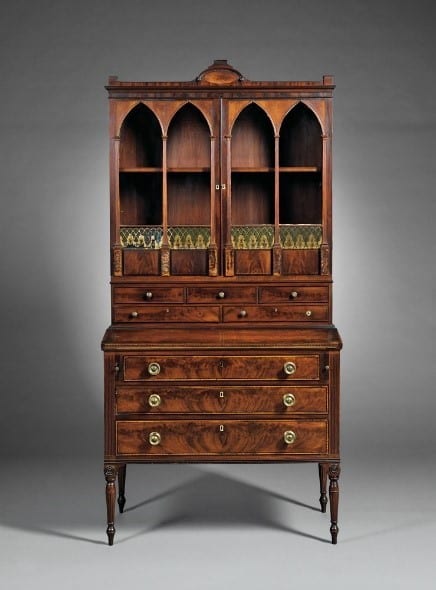
The Federal Period in American furniture lasted for approximately four decades, starting in the 1780s to the 1820s.
While the periods of American furniture we mentioned so far were influenced by the designs of a single country, the Federal period is associated with the impact of both English, as well as French styles.
Moreover, it was during this particular period that the inlaid wood designs started to flourish. Nevertheless, decorative borders were brought to life, bringing an alluring contrast that pleases the senses.
To sum things up, the Federal period of American furniture is best described in a single word: elegance.
The ornamental styling further contributed to a particularly graceful appearance of the furniture, accentuated by the straight lines that remained relevant, similarly to the Pennsylvania Dutch Period.
Video by Thomas Johnson Antique Furniture Restoration – Restoring a Federal Card Table – Thomas Johnson Antique Furniture Restoration
Source: youtube.com
5) The Sheraton Period
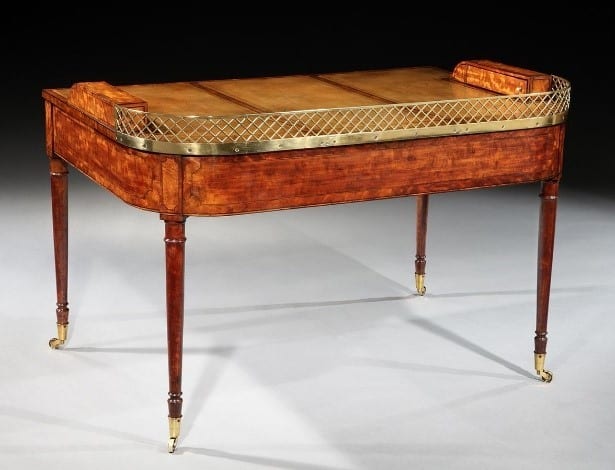
The Sheraton Period lasted for about 40 years, from the 1780s to the 1820s.
This particular period is intricately connected to the legacy of Thomas Sheraton. It was in 1791 that Thomas Sheraton published his notorious designs in his book “The Cabinet Makers and Upholsterer’s Drawing Book.”
In fact, experts refer to the Sheraton period in American furniture as “the most reproduced” style during the Federal period.
Rich veneers and upholstery were the hallmarks of the Sheraton period. Nonetheless, dovetail joints remained quite popular. The intricate brass hardware was also one of the main characteristics of the Sheraton period, along with neoclassical ornamentation.
However, wood carvings kept being quite unpopular and/or rather conservative.
Video by whitedogfive – Antique Furniture Sheraton Fielder Rope Bed Circa 1790.
Source: youtube.com
6) The American Empire Period

The American Empire Period re-occurred along with the Federal Period, covering a similar time frame of 40 years from the 1800s to the 1840s.
The pinpoint of the American Empire Period is the influence of the French furniture design.
In a nutshell, the French design managed to gain a greater impact than the influence of the British furniture design that used to dominate during the earlier periods of American furniture.
The emblems of the American Empire period include carved legs that ended up with claw feet or paw. Nevertheless, curved arms were also highly influential.
On another note, a great accent was put on dark wood that became the most favored type of wood in the manufacturing of furniture during this period.
Interestingly, glass panels were also favored, replacing the well-known raised wooden panels. Meanwhile, the design of dressers would often include the use of supporting columns on the very corners.
Video by Thomas Johnson Antique Furniture Restoration – Restoring an American Empire Footstool – Thomas Johnson Antique Furniture Restoration
Source: youtube.com
7) The Shaker Period

The Shaker Period overlapped the American Empire Period, covering the time frame of another 40 years, starting from the 1820s through the 1860s).
The Shaker Period is associated with a religious group named the United Society of Believers in Christ’s Second Coming. The members of the United Society of Believers in Christ’s Second Coming were the ones to produce the emblematic Shaker period furniture.
The typical colors that decorated the furniture of the Shaker period include blue, red, yellow, and green.
The joinery was characterized by visible locking, and the straight lines in the design were dominant, bringing an overall simplicity to the style. The chair seats were made by utilizing cane or woven material.
Some of the most widely-used types of wood during the Shaker Period were maple, cherry, and pine.
Video by Stumpy Nubs – How Shaker Furniture is constructed- What makes a quality piece?
Source: youtube.com
8) The Victorian Period
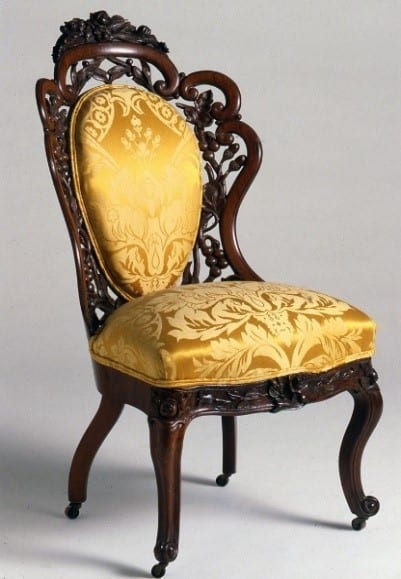
Just like the name suggests, the Victorian period is named after the Queen of England – Victoria.
This period of American furniture lasted for a relatively long period of time – 70 years, which is almost double when compared with the periods we discussed above. Thus, the Victorian style lasted from the 1840s to the 1910s.
Ultimately, the Victorian Period is characterized by distinct tapestry seats. The rich upholstery complemented beautifully the ornate carvings. The proportions were heavy and further accentuated the formal Victorian style.
What’s more, the Victorian Period furniture design was the very first to become massively produced in America.
Interestingly, inlays were also common for this period, and the preferred wood for inlaying purposes was rosewood. On the other hand, the most widely used types of wood in the Victorian style include oak, black walnut, ash, and maple.
Video by home design – Victorian Furniture- Antique Victorian Furniture Styles
Source: youtube.com
9) The Arts and Craft Period
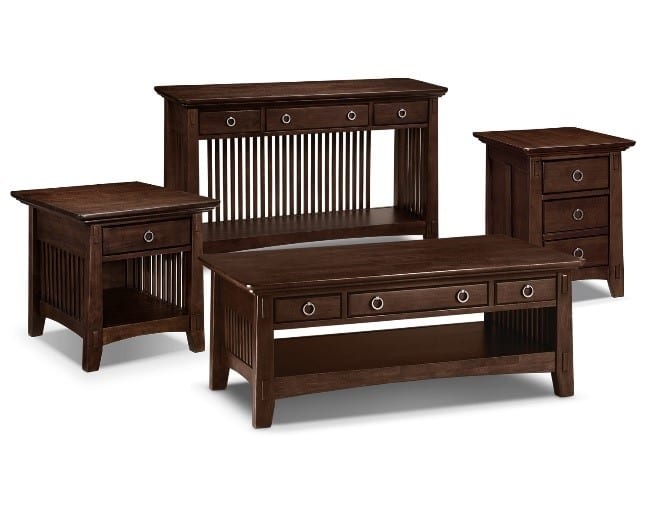
The Arts and Craft Period of American furniture cover the span of another 40 years, specifically the 1880s – 1920s. This period is also commonly referred to as the Mission Period.
Sharply contrasting the Victorian Period that was characterized as opulent, formal, and rather rich in ornaments, the Arts and Craft movement were much more minimalistic and simplistic.
Even though luxury leather was the most widely-spread upholstery, it was used for practical reasons, and not for the sake of the artistic attributes of the design.
Video by Buckminster Upholstery – Mission Style Upholstery – Part 4
Source: youtube.com
Nevertheless, a wide range of different types of wood was favored during this period.
Probably one of the greatest accents of the Arts and Craft Period of American furniture were the finishes. These include shellac and wax, as well as lacquer that served to provide the peculiarly smooth surface of the furniture.
10) The Art Nouveau Period

The Art Nouveau furniture style was first born in France but it quickly spread across Europe. Subsequently, the Art Nouveau design became popular in the United States, too.
Although the Art Nouveau Period lasted for as little as 20 years, starting from the 1890s and up to the 1910s, it had a great impact that expanded way beyond furniture design. The “new art” period influenced architecture, graphic arts, and jewelry design, among others.
The hallmark of Art Nouveau furniture was inspired by the merging of craftsmanship and nature, featuring organic shapes and vividly curved lines. Nevertheless, upholstery was marked by the application of linen, velvet, leather, as well as tapestries.
Video by Artfinding vidéo – Interview with Benjamin Macklowe, an expert in Art Nouveau furniture, by www.artfinding.com
Source: youtube.com
11) The Traditional Revival Period
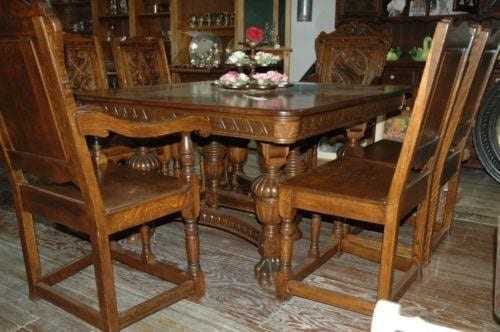
The Traditional Revival Period of American furniture is closely related to the Colonial Period, as well as the Federal Period. After all, there is nothing new about nostalgia, right?
Thus, a period of 30 years starting from the 1920s and continuing until the 1950s was soaked with the artistic hunger and curiosity of furniture designers who looked back to the past periods of American furniture for inspiration.
The trademark of the Traditional Revival Period was the fine decoration of the otherwise straight lines. Nevertheless, veneers and inlays were also brought back to life.
Amazingly, one of the first films made by the Jam Handy Organization was created in order to promote the story and products of Peter Koehler’s furnishings. Based in Naperville, Illinois, Peter Koehler’s furniture manufacturing company became the second largest furniture maker in the United States back in the 1940s.
Video by Periscope Film – 1920s KROEHLER FURNITURE COMPANY SILENT PROMOTIONAL FILM PART 1
Source: youtube.com
12) The Modern Period
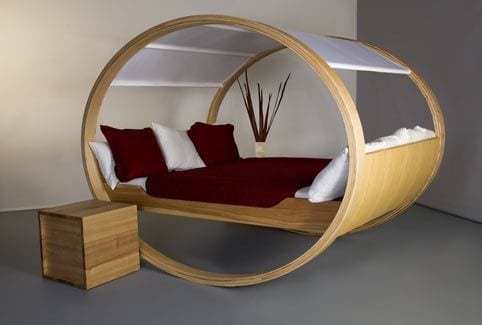
Starting from the 1950s, the Modern Period of American furniture marks the beginning of a new era in the design and manufacturing of high-end products. This period cut the thread between the influence of French and British furniture styles. Instead, a great accent was put on the beauty of Asian and African-inspired designs.
Furthermore, the materials used in the making of various pieces of furniture also expanded tremendously. Metal and plastics started to appear more frequently, and molded plywood also earned a place in the spotlights of the furniture industry.
Ultimately, with the boom of social media, the old limits of furniture design were busted, paving the path to endless creativity, and nonetheless – the DIY fever that promotes the pleasure of being able to make your own, unique furniture designs (even from scraps!).
Finally, merging the old and the new styles have created a whole new wave in the interior design that utilizes the beauty of American furniture from different periods.
Video by House & Home – Interior Design: How To Mix Traditional And Modern Decor
Source: youtube.com
The Bottom Line
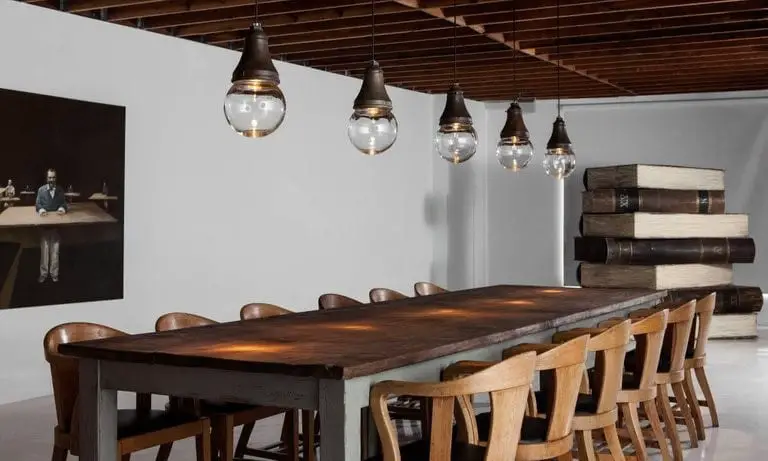
American furniture design has gone a very long way for a relatively short period of time. It is almost incredible when we get to think about the fact that the United States is currently among the top 10 furniture exporters in the world.
We are lucky to witness the new periods of American furniture that are bound to amaze and impress us, pushing the boundaries of the past to bring us straight into the new century where only the sky is the limit.


